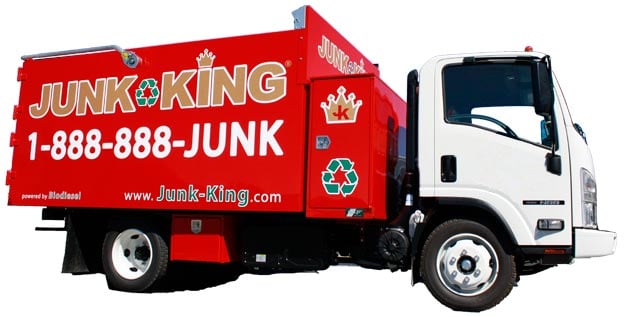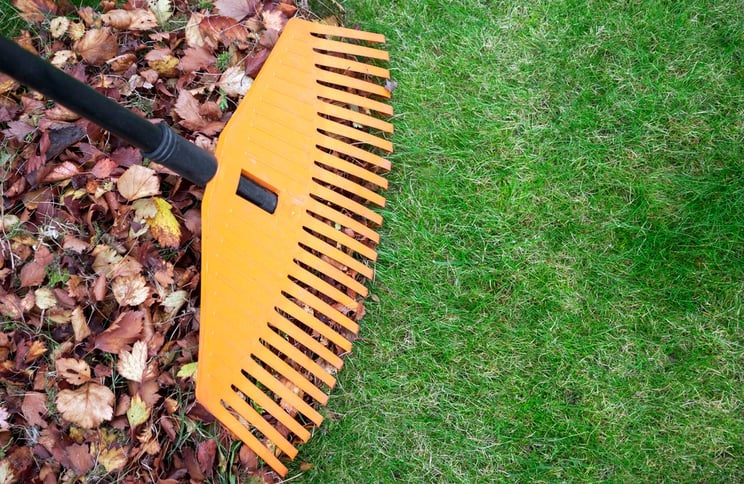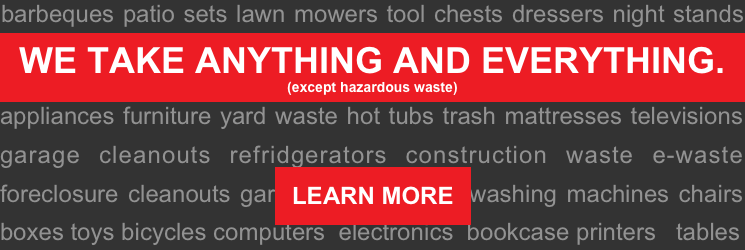Now that it’s autumn, you're probably not spending much time thinking about your lawn. But autumn is the ideal time to prepare your lawn for next spring.
This is the time of year when you spend the least amount of time thinking of your lawn. Chances are you’ve put the lawn mower away and are ready for a few months of holiday fun before having to start on your lawn maintenance again.
But it pays to stay on top of your lawn care, even through the fall and winter. In fact, regularly maintaining your lawn is the best way to ensure a healthy and good-looking yard when spring rolls around.
Loving Your Lawn All Year Long
Many homeowners think lawns need less care in the fall because the grass grows more slowly. But it is during this time of year that your grass is absorbing energy, moisture, and nutrients in preparation for winter. By giving it the right attention now, you'll have a lush, healthy lawn next spring.
Here are some helpful tips and hints to guide you through your autumn lawn care chores:
Have a Mowing Plan
Continue to water and mow your lawn, as needed, throughout the fall. Then as the season draws to a close, drop the mower's blade to its lowest setting for the last two mowing sessions of the year. That will allow more sunlight to reach the crown of the grass, and there will be less leaf to turn brown during the winter.
Be careful, though. When you lower the blade, try to avoid cutting off more than one-third of the grass blades at any one time. You might find it easier to gradually lower the cutting height until the time of the final two cuttings.
This will ensure your grass is as short as possible at the end of the season. This will also protect any new growth which tends to be more fragile near the end of the growing season.
Aerate That Lawn
Fall is also an ideal time to aerate your lawn. Aerating allows oxygen, water, and fertilizer to easily reach the grass's roots. The second-easiest method is to rent a gas-powered, walk-behind lawn aerator. This self-propelled machine will quickly punch holes into the soil and extract plugs of dirt.
If you've got a very large yard the easiest method is to hire a landscaping contractor. This is also a good option if your yard is larger than an acre or more.
Rake Well, Rake Often
Raking leaves is real work, but it's important to remove dead leaves from your lawn as soon as possible. Don't wait until all the leaves have fallen from the trees to start. Otherwise, the leaves will become wet from rain and form thick mats of organic material that will eventually suffocate the grass and breed fungal diseases.
If you have the equipment, an alternative to raking is to use a lawnmower with a collection bag or vacuum system. These are particularly effective approaches if you have a very large yard and a number of deciduous trees. Regardless of what approach you take, the key is to remove the leaves before they turn into a soggy, suffocating mess.
According to most lawn experts, if you fertilize your lawn only once a year, fall is the time to do it. This is because grass leaves grow much more slowly as the weather turns cool, but the grass roots and rhizomes continue to grow quickly. Rhizomes are the horizontal plant stems that lie just beneath the soil's surface that produce the blades of grass above and the roots below.
Applying fertilizer in the fall will deliver essential nutrients for the grass to grow deep roots now and also keep additional nutrients for the spring.
Late fall or early winter are the best times to fertilize cool season grasses. Since the majority of the lawns in North America are made from these grasses, like Bermuda and bluegrass, it is very likely your yard has a typical cool season blend.
For optimum coverage, use a walk-behind drop spreader. It can take longer, but a drop spreader provides the best way to apply an even, consistent layer of fertilizer.
Caring for the Bald Spots
This is also a great time of year to fix any bare, bald spots in your lawn. Often, the easiest way to do this is with an all-in-one lawn repair mixture. You can find these at most garden shops and home and garden supply centers. They usually contain a mixture of grass seed, a quick-starter lawn fertilizer, and organic mulch.
Use a heavy garden rake to work loose the soil on the bald spot. Spread a thick layer of the lawn repair mixture over the area and compact the mixture lightly. Water it thoroughly and continue to water every other day for two weeks.
Fall and winter is also a time when new bald spots can be formed. Try to prevent excessive foot traffic on your winter lawn, especially when the grass is brown and short. While lawn grass is relatively resilient, it will have a difficult time recovering if a path becomes well-worn across the lawn.
Watch Those Weeds
If your summer lawn was invaded by broadleaf weeds like dandelions, now's the time to fight back. Weeds, like most plants, are in the energy-absorbing mode during the fall. They're also drinking extensively which makes them vulnerable to weed killers. Apply an herbicide in the fall and the weeds won't be back in the spring.
Be sure to read the package label before using weed killers. Most herbicide manufacturers recommend applying their products during early-to-mid autumn, when daytime temperatures are consistently above 60 degrees Fahrenheit.
Prepare For Winter in the Fall
There really is not much lawn care that needs to be done during the cold months of winter. Even if you don’t have snow, if your home is in a location that experiences freezing temperatures and frost, your lawn should remain safely dormant until spring.
If you properly prepare the lawn during the last weeks of fall, it will be good until spring arrives.
- Make sure you aerate, fertilize, and mow the lawn before the first freeze of the season.
- Rake away any dead leaves that may have fallen and collected on your yard to avoid wet spots that can become mossy or moldy.
- Keep the lawn cleared of debris and help everyone in the family respect the yard while it is dormant.
Winter Lawn Care Tips
Once you have taken care of everything that needs to be done during the fall there are only a few things you should do until the lawn care season begins again in the spring.
Remove debris: You’ll want to keep heavy objects, including branches and lawn furniture, off of the grass all year long. Objects left on the grass during cold weather can create large dead spots. In the spring the grass in that area will be stunted and thinner than the rest of the yard. Regularly raking will also help remove dead leaves and other debris, which can stifle the grass and inhibit growth.
Make sure that you clear the lawn of all objects after you mow it for the last time of the year. Do an occasional sweep of the lawn every couple of weeks during the winter, as well.
Stop or reduce watering: Cool season grasses experience a growth period in the wetter, cooler months of the fall. However, regions with cool season grasses will experience winter frost or dampness so the grass will not require additional watering. Warm season grasses won’t require additional watering either since they go dormant in the winter months.
Not the time to aerate: While aerating the lawn is a great way to allow fertilizer, water, sunlight and seeds to enter hard-packed lawn surfaces, winter is not the best time to do this. Cool season grasses are usually aerated in the fall, and warm season grasses are usually aerated in the summer. Most grass types should not be aerated in the winter months.
Fertilizing and feeding: Because warm season grasses are dormant in the winter months they won’t require fertilization in winter. Likewise, cool season lawns also do not need fertilization in the winter months. As noted earlier, the best time of year to fertilize a cool season grass lawn is in the fall, although some experts also recommend fertilizing in the spring, as well.
To Mow or Not to Mow: Both warm season and cool season lawns will require little to no mowing or edging during the winter months. Your cool season lawn should have received a final (and short) mowing in the late fall. And warm season lawns are dormant in the winter and won’t require mowing until the spring months.
Weeding and pest control: If your lawn still has weeds and the ground isn’t too hard to pull them out, this can be a good time to remove any unwanted plants from the lawn. However, you probably won’t see too many weeds or pests during the winter. It is possible to see some nesting from mice whose nests can inhibit the growth of healthy grass. If you have any issues with moles or gophers, you may want to call in a professional to take of it for you.
What Kind of Lawn Do You Have?
While there are many varieties of turf or lawn grass, there are generally two types of lawns for the yard: warm season grass and cool season grass. Which type you have is usually dependent upon where you live.
Two Common Types of Lawn Grass
- Warm Season Grasses: Bermuda grass, Zoysiagrass, Buffalo grass, and Bahia are all warm season grasses. This grass type is most often found in warmer climates like the south, and has a peak growing season from spring to fall; it can turn brown during the winter months but thrives in the hot heat of the summer.
- Cool Season Grasses: bluegrasses, fescues and ryegrasses are all cool season grasses. This grass type grows well in regions with cold winters and warm summers, and can stay green nearly all year long. In periods of drought, these grasses need to be watered or else they will enter a dormant period and turn brown.
What Do You Do About Yard Debris and Junk Hauling?
Once you decide to outsource the junk hauling part of your winterizing project, you need to determine which firm is the right one for the job. And while you can certainly find plenty of guys with trucks willing to do the job, choosing that alternative may end up costing you more than you hoped to save. This is why Junk King really is the firm of choice.
Junk King provides an efficient, safe and eco-friendly waste disposal service so you don’t need to worry about the pick up or disposal of the debris after your project is complete. Whether you need our services several times during a project or just once after it is complete, our hauling professionals will ensure that the debris is out of your way so that you can get on with the job.
Our team specializes in commercial and residential junk removal. We can be at your home in mere minutes, so call us today! Our crew is fully insured and well-trained, so you can trust them to get rid of your unwanted items in a professional and courteous fashion.
One of the best things about hiring Junk King is that we recycle a much of the material we pick-up. This is proof of our commitment to being an eco-friendly removal service. If you have questions about what we do or what we believe, give us a call at (707) 744-4254.




